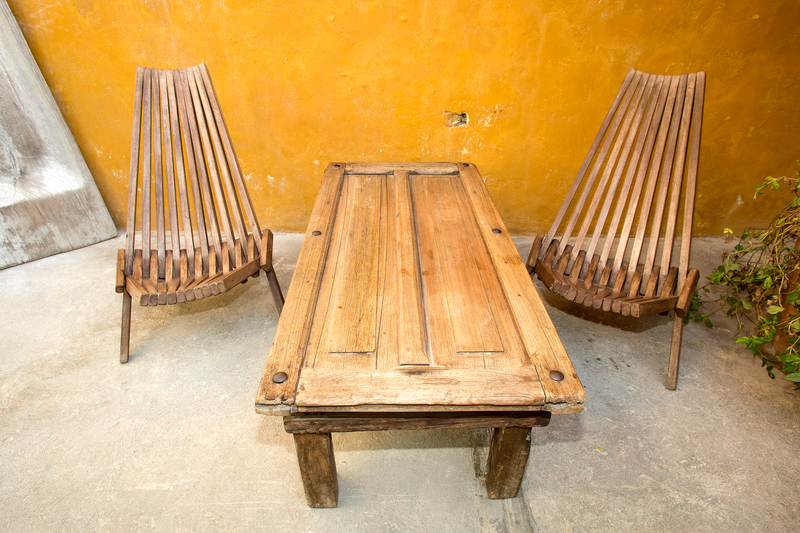Out With the Old: How to Safely Dispose of Large Furniture
When it's time for a refresh, disposing of large unwanted furniture can be daunting--not to mention, it's not as simple as leaving it on the curb for trash collection. Whether you're moving, downsizing, redecorating, or simply getting rid of old pieces, understanding how to safely dispose of large furniture is essential for both your sanity and the environment. The process can be surprisingly straightforward, provided you know your options and follow the proper steps. In this comprehensive guide, we'll walk you through the best methods for disposing of bulky items such as couches, beds, wardrobes, and dining sets in a way that's kind to the planet and your peace of mind.
Why Proper Disposal Matters
Throwing out large furniture is not only a question of convenience--it's crucial for safety, environmental impact, and even legal compliance. Simply dumping a sofa or mattress by the roadside is illegal in many regions, incurs fines, and contributes to environmental hazards. On the other hand, proper furniture removal helps:
- Reduce landfill waste
- Conserve natural resources by encouraging recycling and reuse
- Prevent illegal dumping and associated fines
- Enable others to benefit from usable items
- Keep your community clean and safe

Assess Your Furniture's Condition
Before making disposal arrangements, evaluate whether your large furniture is reusable. Ask yourself:
- Is it still sturdy and functional?
- Does it have minor damage that could be easily repaired?
- Would someone else want or need it?
*If the answer is yes to any of these, your furniture may enjoy a second life through donation, resale, or gifting rather than disposal.*
Options for Disposing of Large Furniture
1. Donate to Charity or Non-Profits
One of the most responsible ways to dispose of large furniture is by donating it. Many charities and non-profit organizations welcome gently used furniture and may even offer free pickup services. Consider the following when donating:
- Check the charity's acceptable items list (some may not accept mattresses or upholstered items for sanitary reasons)
- Ensure items are clean and free from infestations (like bedbugs)
- Contact local branches of groups such as the Salvation Army, Goodwill, or Habitat for Humanity ReStores
- Look for community reuse networks or shelters in need
*Donating furniture supports communities and diverts large items from landfills*.
2. Sell Online or in Local Marketplaces
If your furniture is in good or excellent shape, selling it can make some extra cash and save you removal hassles.
- List on platforms like Facebook Marketplace, Craigslist, OfferUp, or Nextdoor
- Include clear, high-quality photos and full descriptions (size, condition, pickup requirements)
- Specify whether buyers must arrange their own transportation
Strong buyer demand for reliable used furniture means your old couch or table could earn a new home fast!
3. Arrange Bulk Trash Pickup with Your Municipality
Most cities offer bulk item collection services for large furniture removal. However, policies vary greatly:
- Some require advance scheduling and may limit the number of items per pickup
- Accepted items may exclude certain materials (e.g., mattresses, recyclables, electronics)
- There may be a charge, or pickups could be free a few times per year
- Improperly placed items could lead to fines
*Visit your municipal website or call the sanitation department to confirm requirements before putting furniture curbside.*
4. Use Furniture Removal Services
If you're unable to move heavy items yourself or have multiple pieces, hiring a professional large furniture disposal service may be your best option. These include:
- Junk removal companies such as 1-800-GOT-JUNK, Junk King, or College Hunks Hauling Junk
- Specialty eco-friendly movers who recycle or donate items whenever possible
- Local haulers listed through neighborhood apps or classifieds
These experts can handle all the heavy lifting and often prioritize reuse and recycling over landfill waste.
5. Recycle What You Can
Recycling is an excellent alternative if your furniture is made primarily of recyclable materials and can't be reused. Some options:
- Wooden furniture can be taken to certain recycling centers for repurposing or chipping into mulch (painted/treated wood may be excluded)
- Metal frames and components are widely accepted at scrap yards
- Mattresses can be recycled at specialized facilities (handling wood, foam, metal, and fabric separately)
- Contact your local environmental office for programs that accept large items
Not every curbside recycling program accepts large furniture; verify before dropping off items.
6. Repurpose or Upcycle
Feeling creative? Try upcycling or repurposing your large old furniture into something new, such as:
- Turning an old dresser into a bathroom vanity
- Using wood from beds or tables for shelving or gardening projects
- Transforming a bookcase into a cozy reading nook
*DIY repurposing can make disposal more sustainable and even fun!*
Special Considerations for Different Furniture Types
Couches and Sofas
Couches are bulky and often heavy. Many contain a mix of materials, making them trickier to dispose of. For sofa removal:
- First, clean and check for donation potential
- Check local recycling programs for cushion foam or frames
- Try disassembling for easier transportation (legs, cushions, fabric covers)
- For unusable couches, arrange a city bulk pickup or hauler service
Beds and Mattresses
Mattresses are especially problematic in landfills due to their size and non-biodegradable parts. For mattress disposal:
- Donate newer ones to shelters if in good condition
- Explore mattress recycling programs (many cities have them)
- If your city offers "white goods" collection, use this option for mattresses and box springs
- Never dump mattresses illegally--there are often hefty fines
Wardrobes and Cabinets
These are often too large for standard trash collection, so:
- Disassemble where possible for easier removal
- Offer on buy-nothing or freecycle groups
- Use wood or metal recycling facilities
Dining Sets
Complete tables and chairs in reasonable shape can almost always be reused. Donate, sell, or repurpose broken components.
Tips for Safe Handling and Removal
- Wear gloves and sturdy shoes: Large furniture can have sharp edges, nails, or splinters.
- Dismantle if possible: Take furniture apart to reduce bulk and make it easier to carry.
- Use dollies/straps: Moving heavy items without proper tools risks injury and damage to your home.
- Lift with your legs, not your back: Practice safe lifting to avoid strains.
- Clear pathways: Ensure your route from the room to the exit is free of obstacles.
- Teamwork matters: Never move heavy or awkward furniture alone.
Environmental Impact: Why Responsible Disposal Counts
Did you know the EPA estimates Americans discard over 12 million tons of furniture and furnishings every year? Most of it ends up in landfills. But when you properly dispose of large furniture, you help:
- Reduce landfill overflow and associated greenhouse gases
- Slow resource depletion by supporting recycling and reuse systems
- Boost the secondhand economy and local charities
- Minimize pollution from improper disposal (like burning furniture, which releases toxins!)
Let your old sofa or dining set become part of a greener future.
What Not to Do When Disposing of Large Furniture
- Don't dump illegally: Curbside abandonment, empty lots, and alley drop-offs are typically illegal and subject to fines.
- Don't burn furniture: Many materials release toxic fumes when burned.
- Don't rely on standard trash day: Most garbage collection won't take items that are too large or heavy.
- Don't ignore local guidelines: Regulations vary, and improper disposal can be costly.
Your Step-by-Step Checklist for Large Furniture Disposal
- Assess - Is your furniture reusable, recyclable, or only fit for disposal?
- Choose your method - Donation, resale, bulk pickup, recycling, or removal service?
- Prepare your furniture - Clean, disassemble, and make easy to move.
- Arrange transport or pickup - Schedule with your chosen charity, buyer, or hauler.
- Follow local rules - Confirm collection schedules and accepted items.
- Confirm completion - Ensure furniture is fully removed and doesn't block public areas.
- Celebrate! You've disposed of your large furniture safely and responsibly.

Frequently Asked Questions
Can furniture stores take my old furniture?
Many new furniture retailers offer haul-away or recycling services for your old items for a fee or as part of a promotion. Ask when you make your new purchase.
Are there fees for city bulk pickup?
Often yes, especially for more than one or two items. Some areas offer a few free pickups per year, while others charge per item.
Should I tip junk removal crews?
Tipping is not required, but it's appreciated if the service is exceptional or if crews remove very heavy or difficult items.
Do I need to be present for pickup?
For donations and city pickups, sometimes you can leave the item outside with a label. For private buyers or junk services, presence is typically required.
Conclusion: Make Room for the New--Responsibly
Getting rid of large, cumbersome furniture doesn't have to be stressful. With a little planning and awareness of your options, you can safely, legally, and sustainably dispose of large furniture. From donating to recycling, and using professional removal services, you have the power to protect the environment and support your community. Out with the old, but always with care--make space for something special while doing your part for a cleaner planet!
Ready to start your large furniture disposal? Share your experience, tips, or questions below!